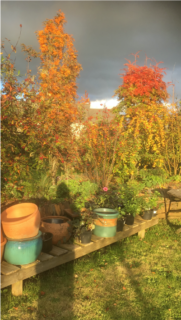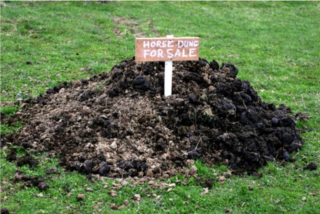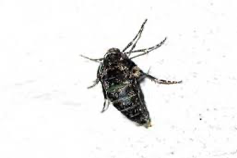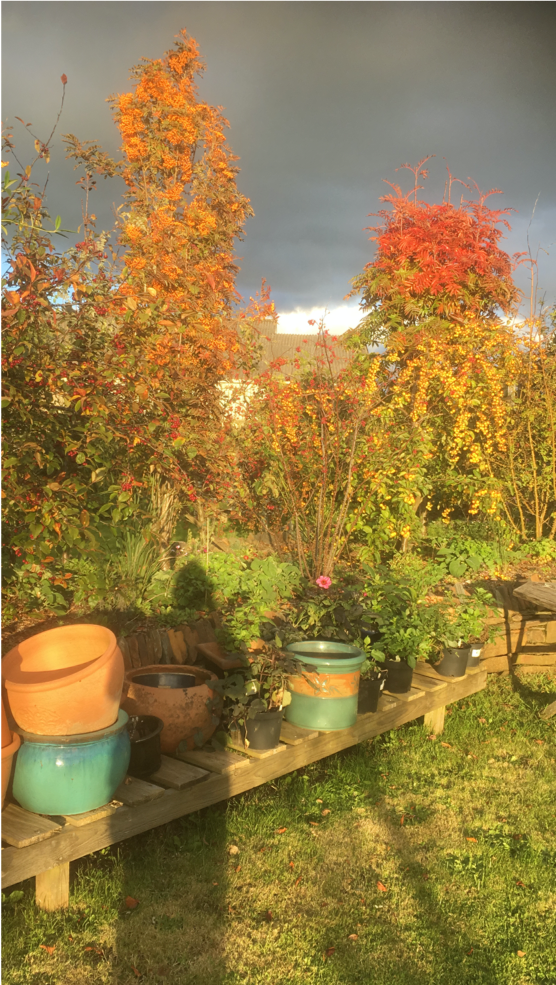We’ve had a not unreasonable October here in Cornwall. Apart from some days of howling wind and rain, which seem to be the norm whichever month we are in these days, it has remained remarkably warm and sunny at times. Unfortunately, this means we have had the longest and most damaging infestation of caterpillars on our summer brassicas we have ever seen. Still picking them off even now, and cursing the holes they are leaving in everything.
 The only reminders that we are well into autumn are the slightlier, though not that much, chillier nights and some burgeoning autumn colour in our gardens. The Liquidambars are looking lovely, the crab apples are glorious (if you’ve got one, make some jelly – it is the easiest and most rewarding couple of hours you’ll spend) as are the native euonymus and viburnum opulus in our hedging. However, even the autumn colour seems a bit late in arriving, because of the warm days. Let’s hope we get to see a good display before an autumn storm rips the leaves off before our eyes, or may have even done so by the time you read this.
The only reminders that we are well into autumn are the slightlier, though not that much, chillier nights and some burgeoning autumn colour in our gardens. The Liquidambars are looking lovely, the crab apples are glorious (if you’ve got one, make some jelly – it is the easiest and most rewarding couple of hours you’ll spend) as are the native euonymus and viburnum opulus in our hedging. However, even the autumn colour seems a bit late in arriving, because of the warm days. Let’s hope we get to see a good display before an autumn storm rips the leaves off before our eyes, or may have even done so by the time you read this.
While it is tempting to ease off a little at this time of year, there is always plenty to do in the garden even now, much of which could go under the heading of “investment and protection” gardening. No need to don a black suit and sunglasses – this is about doing some tasks which will make your garden all the better next year. Much of the growing we have done this year has depleted the soil of some nutrients, so time to put a bit back. A word of caution: many of these are weather dependent – if we have a really cold or wet snap, don’t mulch until there is a respite. You’ll simply be trapping the cold and wet under the mulch. And don’t walk on very wet soil – it will destroy the soil structure and make it too compacted to work.
 Hopefully, you have been composting your veg and fruit kitchen waste, and your garden litter all year, and you now have a composter full of well rotted material, ready to go back into the soil. If you have raised vegetables and flower beds, any you don’t plan to use over the winter can be covered with 3-4” of compost, and then, if you wish, covered with black polythene. There is no need to dig it in now, as the worms should do most of the work for you over the winter, and the black polythene will keep the soil temperature nice and warm. If you don’t have your own compost, approach your local friendly farmer, who may have some cow manure you can have instead, or failing that, pick up some bags of horse manure; many people sell it at the side of the road, or from your local stables.
Hopefully, you have been composting your veg and fruit kitchen waste, and your garden litter all year, and you now have a composter full of well rotted material, ready to go back into the soil. If you have raised vegetables and flower beds, any you don’t plan to use over the winter can be covered with 3-4” of compost, and then, if you wish, covered with black polythene. There is no need to dig it in now, as the worms should do most of the work for you over the winter, and the black polythene will keep the soil temperature nice and warm. If you don’t have your own compost, approach your local friendly farmer, who may have some cow manure you can have instead, or failing that, pick up some bags of horse manure; many people sell it at the side of the road, or from your local stables.
These mulches can be used equally well on your ornamental beds, and also act as a great weed suppressant. However, make sure the animal manure is well-rotted before you apply it, otherwise the heat generated by the decomposition could burn or kill your beloved plants. A rule of thumb is, if it doesn’t smell pooey any more, it should be OK to use.
Leaf mould is a lovely medium for mulching too, and very little effort to produce. If you haven’t made some in previous years, start this year by simply gathering your fallen leaves and putting them in a simple store made of chicken wire, with bamboos threaded through to keep the sides upright. If you don’t have room for that, a bin bag with a few holes in will suffice, but wet the leaves before sealing the bag, as dry material won’t break down efficiently.
Another method of putting nutrient back into the garden is to use winter manures. These are a group of plants that can be grown over winter, and simply dug in to help improve the soil. There are a number which can be grown at this time of year – winter tares, winter field bean and grazing rye.
 On the protection side, there are a number of measures you can take to help your plants and pots make it through the winter. Our biggest problem here on the Roseland is wet, rather than extreme cold, but wet kills just as surely. Wet followed by a frost can do for your pots as well but there are a few measures you can take to avoid this. If you have pots you’d hate to lose, raise them up on pot feet for the winter. They will drain better, and the water is less likely to be held in the pot itself. It is the expanding water which causes the pot to crack. Having an alpine pan or pot is quite de rigueur at the moment, and while alpine plants can take all the cold the weather can throw at them, they really do not like to sit wet. It’s a sure way to wave them goodbye. If you can, cover them up for the worst of the wet weather., or move them out of the wet altogether.
On the protection side, there are a number of measures you can take to help your plants and pots make it through the winter. Our biggest problem here on the Roseland is wet, rather than extreme cold, but wet kills just as surely. Wet followed by a frost can do for your pots as well but there are a few measures you can take to avoid this. If you have pots you’d hate to lose, raise them up on pot feet for the winter. They will drain better, and the water is less likely to be held in the pot itself. It is the expanding water which causes the pot to crack. Having an alpine pan or pot is quite de rigueur at the moment, and while alpine plants can take all the cold the weather can throw at them, they really do not like to sit wet. It’s a sure way to wave them goodbye. If you can, cover them up for the worst of the wet weather., or move them out of the wet altogether.
It is also worth investing in some bubble wrap or horticultural fleece if you have tender plants you can’t move; for example bananas or citrus. The simple act of putting on a layer which stops the frost sitting on the leaves will help enormously.
One last protection you might want to consider is for your fruit trees. It is at this time of year that the wingless females of the winter moth trek up your fruit trees, preparing to lay eggs. If not stopped, the caterpillars which emerge in spring will devour your fledging leaves and flower buds, and seriously damage your next year’s crop. You can apply tree grease, or grease bands to the trunks of your fruit trees to reduce or eliminate the problem.
There are also some planting jobs you can do in November if we get some good outdoor days. It’s still a good time to plant trees and shrubs. It’s also the perfect time to be planting winter onions and garlic. Winter onions planted now will be ready around June, and fill that gap when the stores of last year’s summer onions have run out. The joy of winter onions is that because of the lower temperatures in the early part of the year, they are much less inclined to go to seed. Plant with the very tip of the set peeping out of the soil, but keep an eye out for pigeons, which like to tug on them to see if they are worth eating (no, they aren’t!).
Garlic needs a blast of cold over the winter to help it form its bulb divisions as it ripens. Break the bulb down into individual cloves and plant each separately, fully under the soil this time, not proud of it. For those who think they don’t like garlic, there are some lovely mild varieties available now, which won’t blow your head off, or leave you too unsociable the following day.
And, it’s tulip time again! If you’ve been reining yourself in, you now can throw caution to the wind and plant some of the wonderful shapes, sizes and colours of tulip available these days. It seems mad that these beautiful blooms once almost bankrupted a country, and now we can have a pot of loveliness for a few pounds. If you are putting them into the ground, be sure to put a good layer of grit in the planting hole to avoid the bulb rotting before it gets a chance to sprout. They look great coming up through wallflowers (grab some bare root ones while you can – there are far fewer grown these days), but equally striking on their own. If you are putting tulips in a pot, mix some grit in with your compost to aid drainage. It’s not too late to do some lasagne planting with multiple bulb types (we mentioned this last month), and now you can add some tulips for an even brighter and longer display.
And finally for this month (so much to say, so little space!!), sort out your old veg and flower seed, discarding anything that’s more than a couple of years old, and treat yourself to a browse through the seed catalogues in readiness for next year. We have been doing just that and found ourselves some unusual little gems. Growing from seed is so much easier than you think, and you can fill your garden with things that no one else will have. All you need is some compost, a seed cell tray and a window sill, and new plants will be at your fingertips. Plenty will overwinter and give you a head start on next year, so go on, set off some new life. We all need that lift at the moment.
Helen Robins
Calendra Collective

